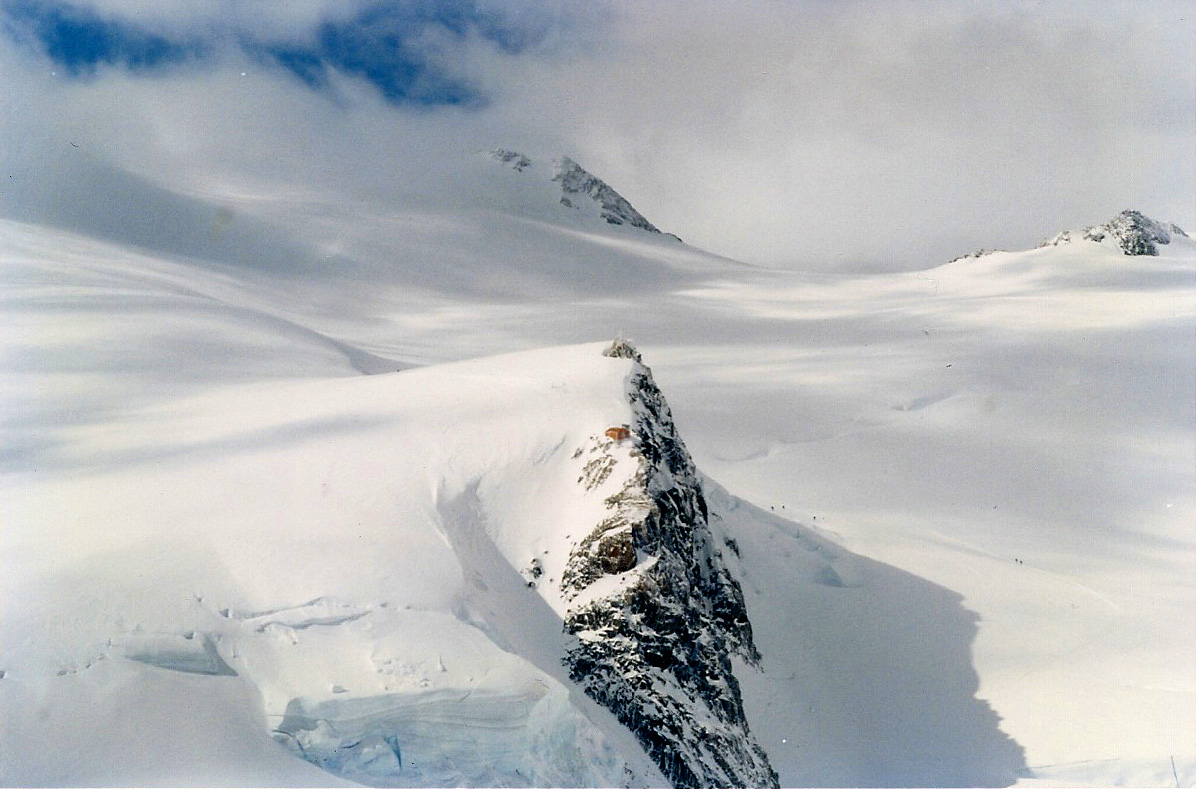Top of the Tasman Glacier, New Zealand (10.10.12)
This time sixty years ago Edmund Hillary was eight months away from climbing Mt Everest with Tenzing Norgay.
As a Kiwi he probably knew the Aoraki/Mount Cook National Park peaks better than any other. He climbed Mount Cook, New Zealand’s highest point, via the south ridge on 30th January 1948. Although I am not personally a climber, I have been fortunate enough to enjoy the drama and magnificence of the views he would have seen from the top.

I have always been drawn to the hills, and often built trips around hiking, scrambling or skiing up, over or around a particular mountain range. Whilst I think it is difficult to beat Europe for day walks in the Alps, Pyrennes or Scottish Highlands, probably the most impressive walk & ski combination I have experienced was on top of the Tasman Glacier at Mount Cook.
Flying up onto the glacier’s high plateau, in the shadows of Mount Cook and Mount Tasman, I joined a small group of friends taking two weeks’ food, bundles of all-weather ski equipment, seal skins and an impressive selection of Scottish whiskies.
Based in the most precariously perched weather station-hut we hiked and skied the deserted fresh powder bowls and mountain gullies of this remarkable National Park.
As well as enjoying views stretching from coast to coast, we could also gaze down New Zealand’s longest glacier pulling 27 kms away past our hut into the valley below. We lived in a Narnia World away from all of mankind.
Every morning we woke to a foot of fresh powder snow, blue skies and a mountain silence punctuated by the odd crash of falling ice and ominously strong whispers of wind.

With seal skins strapped to our skies we spent our days climbing high above our enormous winter wonderland, before skiing down through the upper mountain bowls atop a 600 metre ice base.
At Nomadic Thoughts we continue to arrange over-glacier flights, upland treks and ski touring to this region, and one noticeable fact is that the Tasman Glacier itself is receding at an alarming rate. Whilst these images of the upper glacier remain, the Mueller, Hooker and Tasman glaciers are reportedly retreating at approximately 180 metres a year.

The mountain top views across one of the southern hemisphere’s most impressive landscapes remain as dramatic today as they were sixty years ago, but were Edmund Hillary still alive he would not recognise the local glacial scenery – not least as the 2011 Canterbury earthquake reportedly dislodging an additional 30 million metric tons of ice from the terminal face alone.
Although today’s glacier – covering an area of 101 square kilometres, starting at a height of 3,000 metres – does still offer a perfect environment for wannabe Himalayan mountaineers, estimates imply that the Tasman Glacier will disappear in a matter of decades, certainly sooner than any of its Himalayan cousins.

















